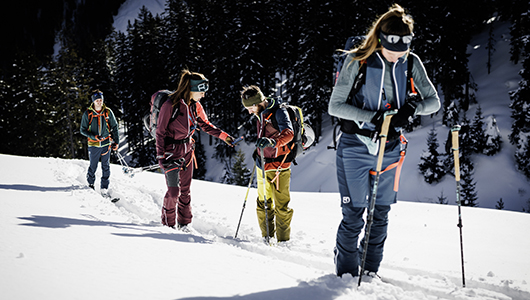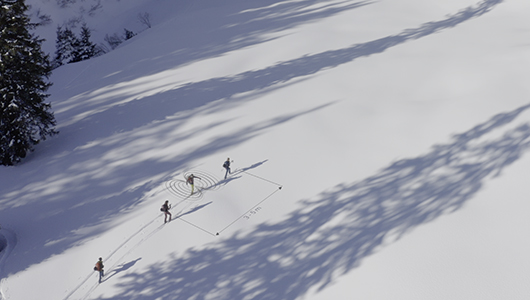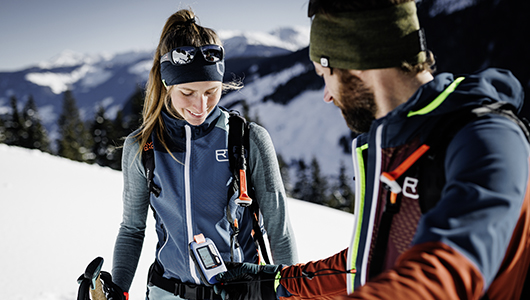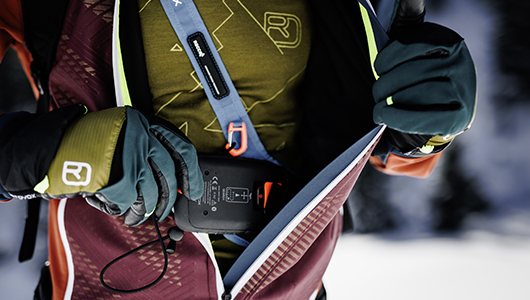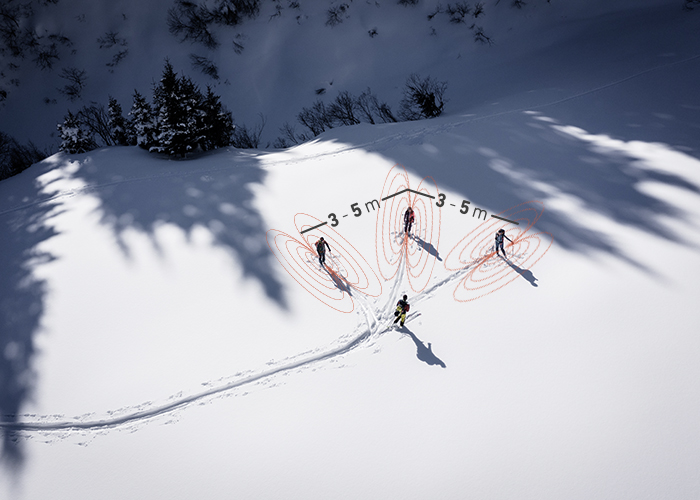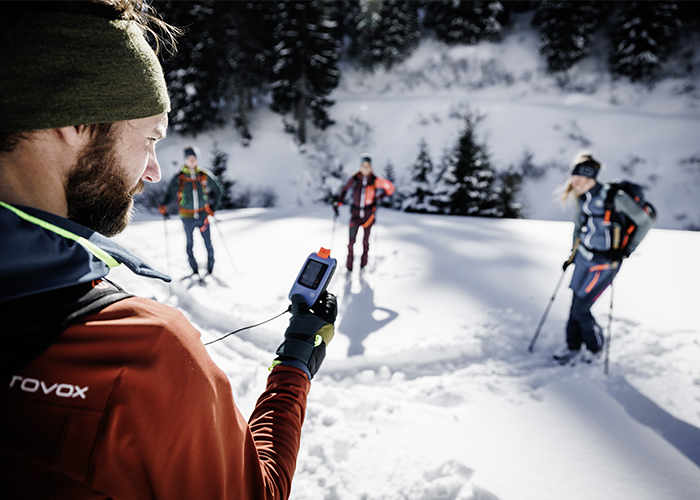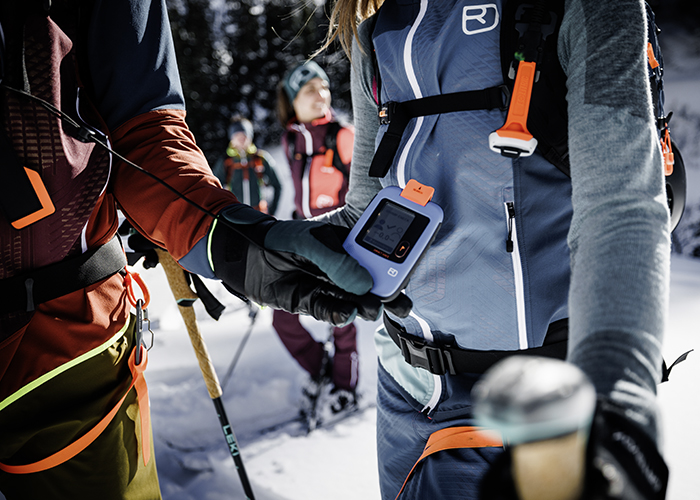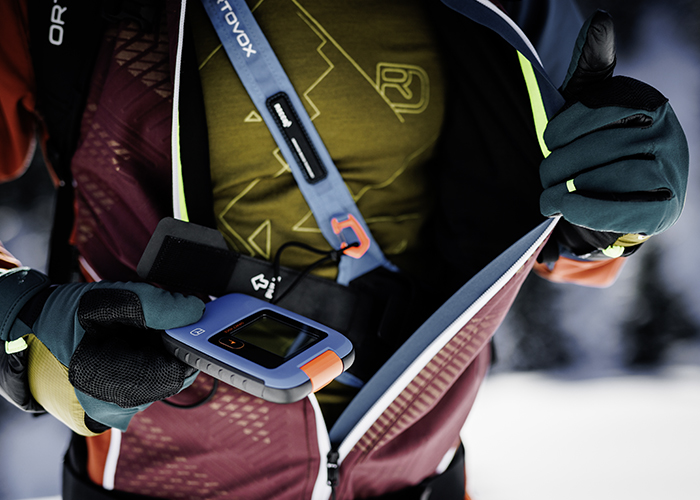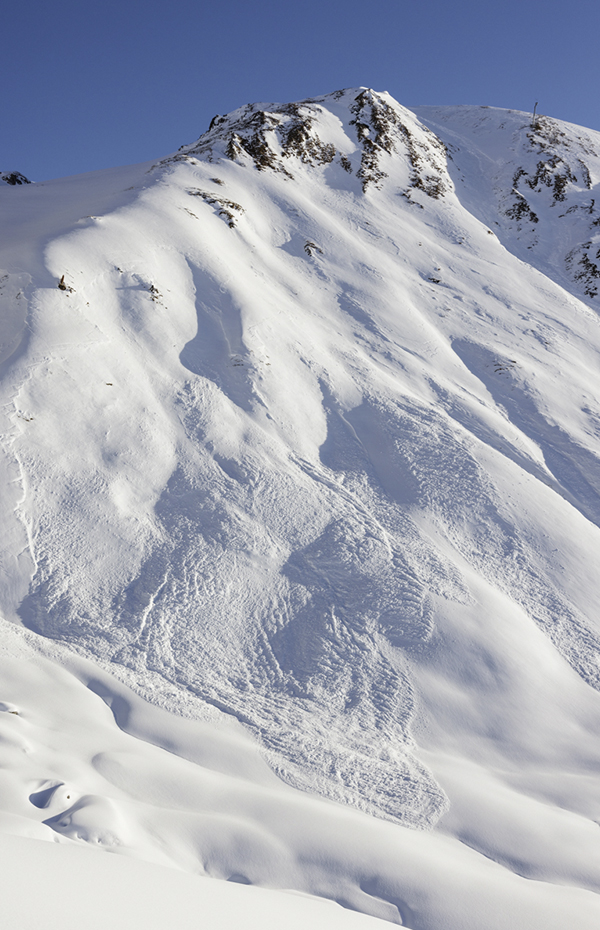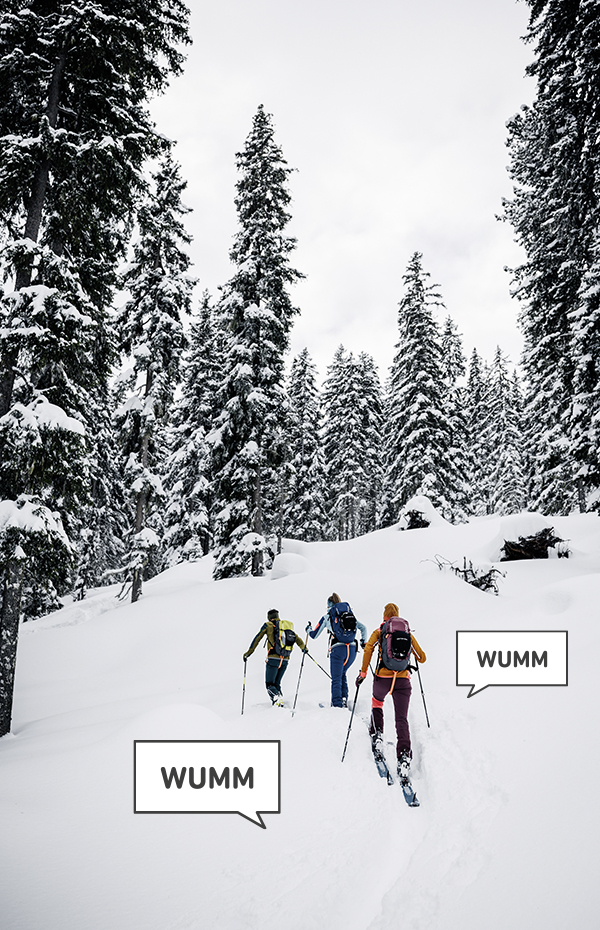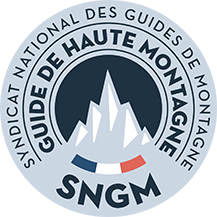

AVALANCHE TRANSCEIVER CHECKS
An avalanche transceiver checks are now a standard part of tour preparation. The aim is to check whether every group member has a functional avalanche transceiver with them. Carrying a probe, shovel and avalanche transceiver is considered a common standard of generally accepted practice in the backcountry. Experienced group members who start without carrying out an avalanche transceiver check can be accused of “culpable negligence” if inexperienced members come to harm as a consequence.
VIDEO
THE RIGHT WAY TO PERFORM AN AVALANCHE TRANSCEIVER CHECK
Thorough avalanche transceiver check
As part of the thorough avalanche transceiver check, each device is checked in both function modes; this means you check that all devices can both transmit and search. Because, from a technical point of view, both functions work independently of each other. This check makes it immediately clear whether all group members know their device well enough to switch them from “transmit” to “search” and back. Both the quick and thorough avalanche transceiver checks can be performed in a semi-circle or in a line (one behind the other). The method below is for a group standing in a line.
Quick avalanche transceiver check
The quick avalanche transceiver check is used only to check whether every participant has switched on their avalanche transceiver and that they are transmitting properly. Modern avalanche transceivers automatically conduct a self-check, meaning that a defective search mode would be displayed as an error message.


Keep your eyes and ears open...
When we are out and about in the mountains – so at level two of the 3x3 filter method – we collect all of the important observations about the three contributing factors “conditions”, “terrain” and “people”. Much information that was missing in the planning stage is now “gifted” to us outside – we just have to be attentive and identify it.
Warning signs
Warning signs indicate a volatile avalanche situation. Warning signs include fresh avalanches that occurred no more than a day ago, whumpf sounds and cracks that appear when you step on the snowpack. If you observe and warning signs, you should immediately take defensive action, i.e. remain on terrain with a steepness of less than 30° and keep away from big slopes!


